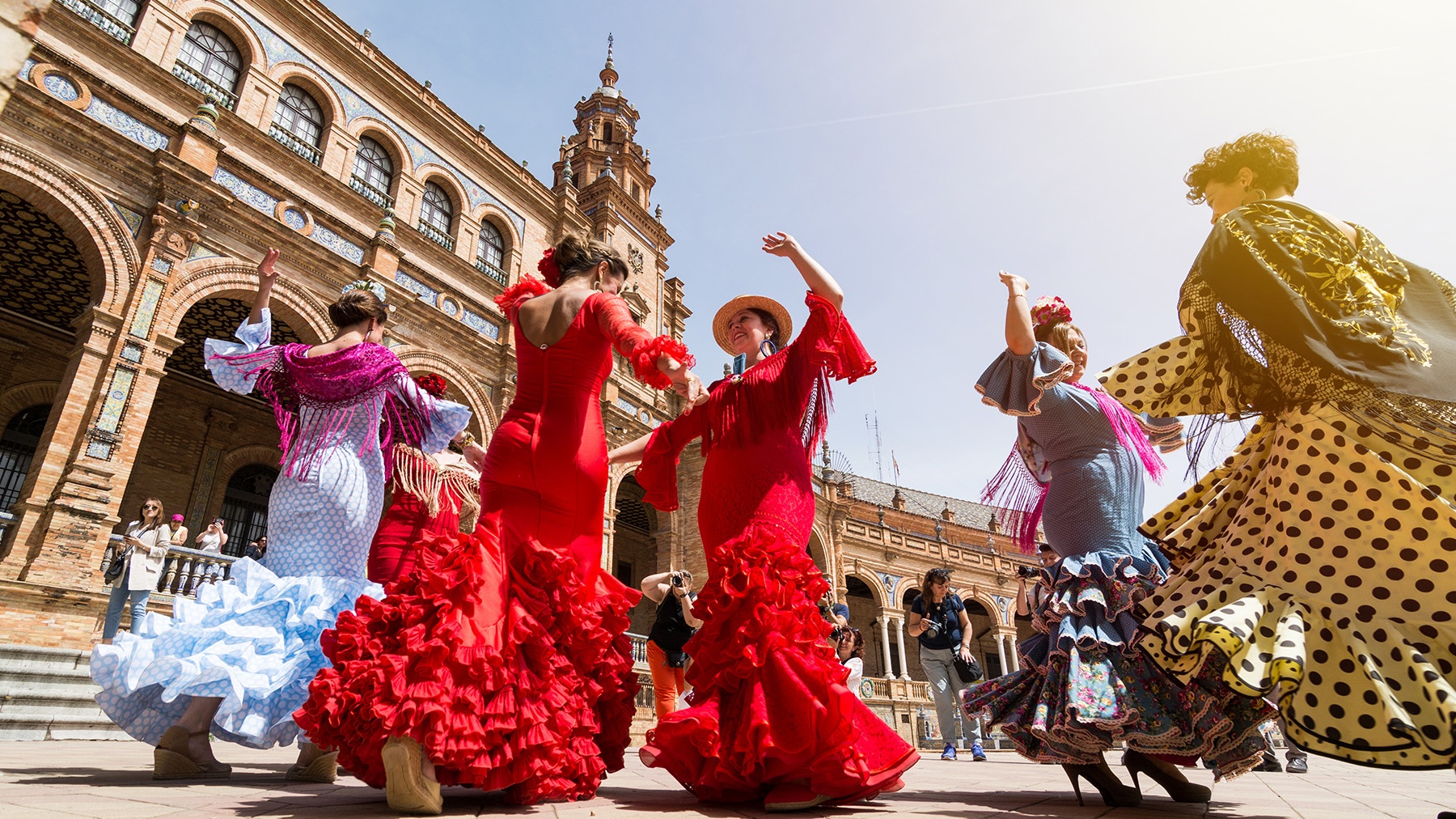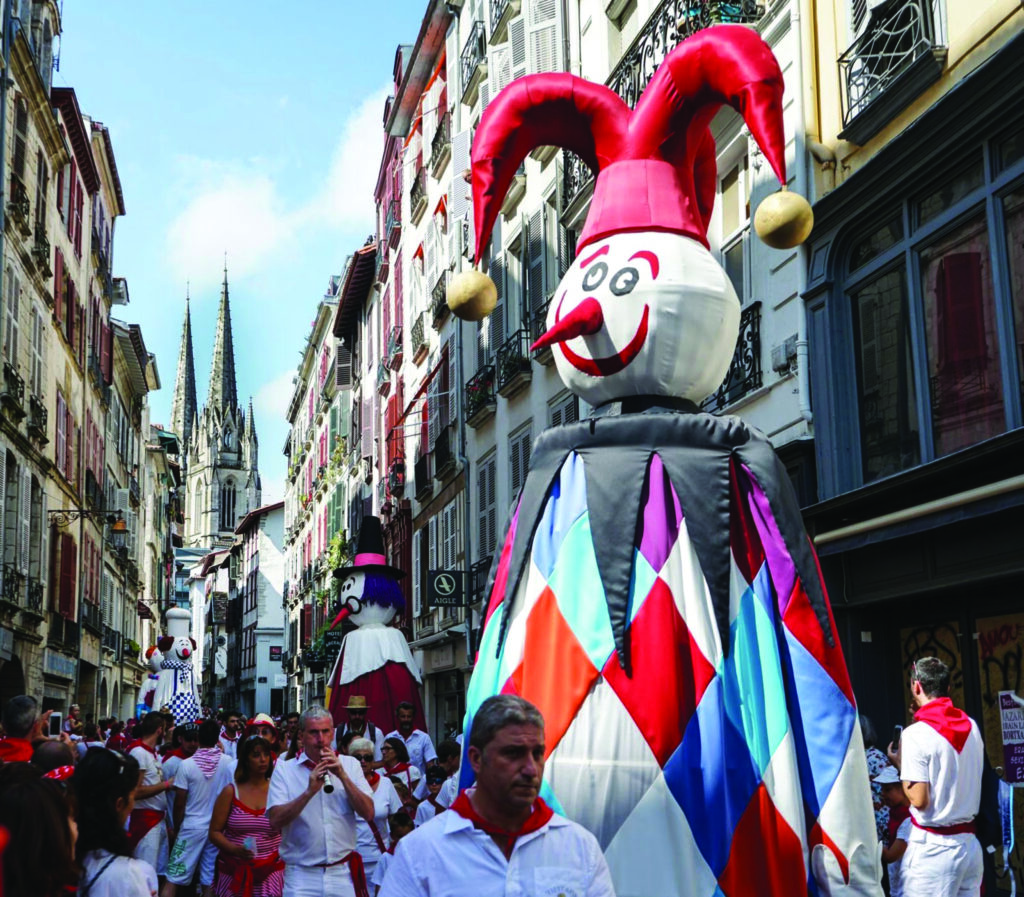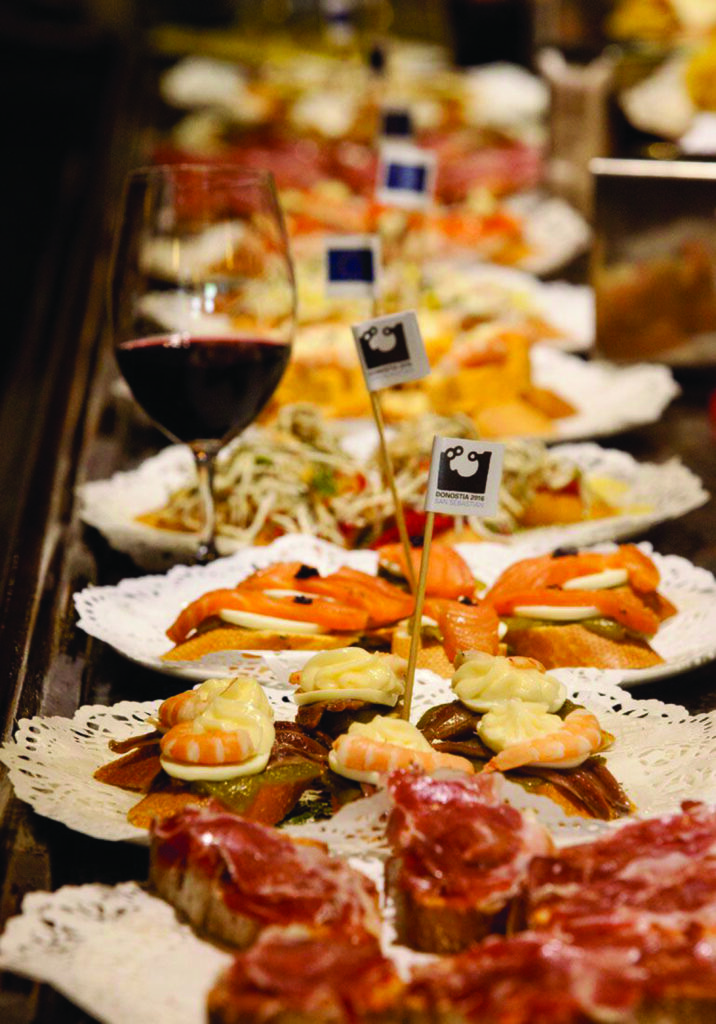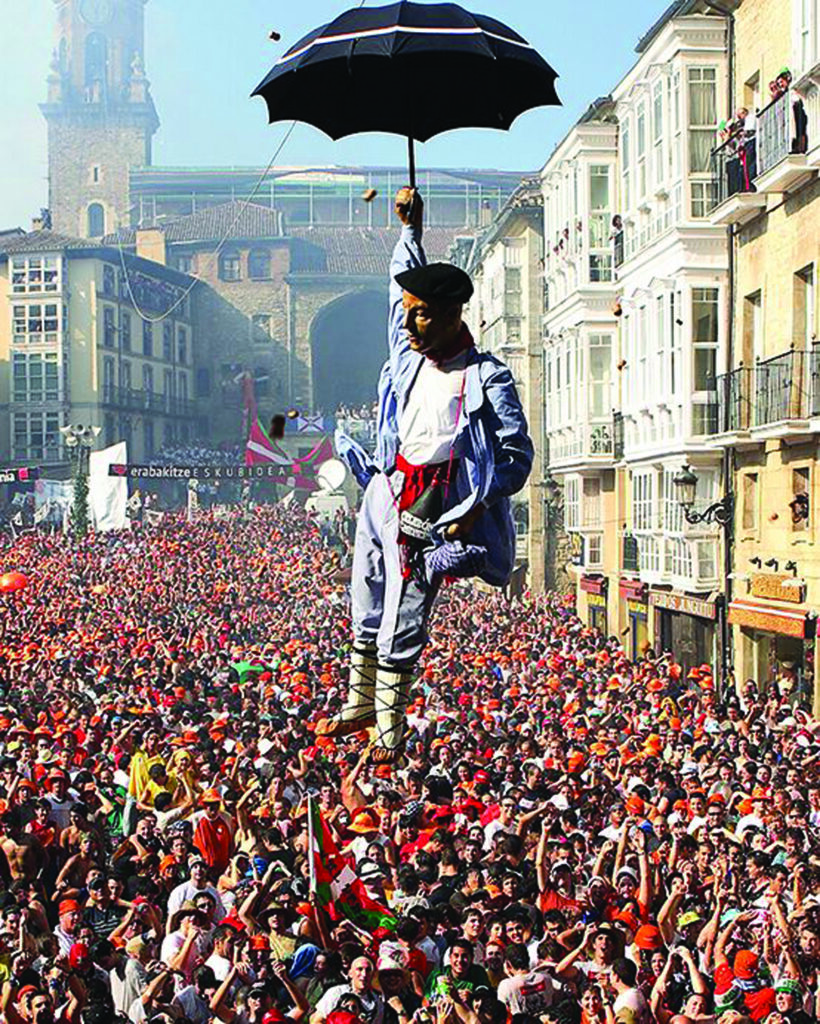
Basque Bonkers – The summer months are when the Basque region goes wild
The Basque Country is steeped in history going back millennia. The people in this little pocket of Europe that overlaps Spain and France are fiercely proud of their distinct culture, and during the summer months, the region explodes into life in a sea of wine, bull and folklore rituals with all-day parties, crazy costumes and cuisine to die for.

These events and festivals act like a magnet, drawing in visitors from all over the world keen to experience a bit of Basque culture. The region is nestled between the Pyrenees and the Atlantic Ocean, and Basque (or Euskara) is spoken, as well as Spanish or French; Euskara is the only remnant of languages that existed before southwestern Europe was Romanised.
The major conurbations of the Southern Basque Country, in Spain, are Bilbao, the destination of most incoming flights, the elegant coastal city of San Sebastian, the Basque capital Vitoria-Gasteiz, and Pamplona. The Northern part, in France, houses the palatial coastal splendour of Biarritz, while Bayonne is famous for its magnificent summer festival.
Basque food is also unique and a rich, almost obsessive, part of local culture, with a reputation as some of the best to be had in Europe. Signature dishes include great surf-and-turf combos, hake stew, lobster salad, vegetable and fish soups and the much-revered sea bream. There is heated rivalry over which part of Basque turns out the best culinary delights.
This competitive spirit is also evident in Basque sports such as pelota, which has been described as the fastest ball game in the world. There are also many herri kirolak (rural sports) competitions involving chopping wood, lifting massive stones, manually drilling holes in rocks and oxcart lifting. These can be seen at many of the summer fiestas in the region.

Festival highs
In graceful Haro, capital of the Rioja Alta wine region, the ‘Battle of Wine’ occurs in late June and is of such repute it has been designated a ‘festival of international tourist interest’. After a mass that is celebrated at the Chapel of San Felices de Bilibio, participants wearing white squirt wine on each other until everyone’s clothes change colour.
About a week later, the most talked-about of the Basque summer festivals kicks off in Pamplona. The Fiesta de San Fermin, popularly known as the Running of the Bulls, takes place every 6-14 July transforming the historic city into a frenzy of strength, speed and colour. Each morning at eight o’clock, six bulls are released onto the narrow, cobbled streets where they rush through a sea of fleeing people wearing white and red scarves around their waists and necks. Their route to the bullring only takes a few minutes, but each year some of the participants will be injured, and occasionally fatally gored. It is common for tourists to try their luck and join in, often as a last-minute act of bravado just before the bulls go past.
From 21-23 July, the bizarre spectacle of Danza de los Zancos (Dance of the Stilts) can be observed in Anguiano. Here, dancers on 5cm-high stilts tiptoe through the sloping, cobbled streets as part of a parade celebrating a pagan ritual. Performers wear colourful clothing with their hidden petticoats providing much-needed balance.

Coastal giants
In the last week of July, the Fêtes de Bayonne commences at the city’s Place de la Mairée when a mascot throws keys from the balcony to the hordes below. This is the largest festival in France, with numerous parades and dances, music galore, giant figures roaming the streets and breathtaking fireworks displays. Tourists are encouraged to join in the fun.
Located at the confluence of two rivers, Bayonne treasures its rich cultural heritage; it was officially recognised as a French ‘Town of Art & History’ in 2012. There is plenty to browse in this city also renowned for its superb chocolate, and regular tours are available in July and August. Just 8km (5 miles) south of Bayonne on the Basque Coast is beautiful Biarritz, which is also worth exploring. Anglet and Hossegor, to the north, offer world-class surfing action, and from 7-10 July, the former’s annual surf film festival draws more sedate crowds to the beaches.
(Read the full interview in the May 2023 issue (pg: 138). Available on the Gafencu app on Android and Apple.)







